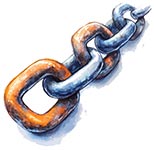Internal linking might sound like a technical term, but it’s simply about how the pages on your website connect to one another. This practice is a game-changer for improving how easily people navigate your site and how well search engines rank it.

What is Internal Linking?
Internal linking refers to the practice of linking one page of your website to another page on the same site. Unlike external links that point to other websites, internal links keep visitors within your site, guiding them from one piece of content to another that’s relevant. These links help search engines understand your site’s structure and establish a hierarchy of information.
Benefits of Internal Linking
Why should you care about internal links? Because it offers a host of benefits, from making your website more user-friendly to giving your pages a better chance of ranking well on search engines. It also helps distribute authority across your site, making sure important pages get the attention they deserve.
Using Descriptive Anchor Text
When creating a link, the words you choose to hyperlink—known as anchor text—should be descriptive. Instead of using generic phrases like "click here," opt for text that clearly indicates what the linked page is about. This approach helps search engines and users understand the content of the linked page, making your site more intuitive to navigate.
Best Practices for Internal Linking
To make the most of internal linking, follow a few simple practices. Use clear, descriptive text for your links so both users and search engines know what to expect. Always link to content that adds value for the reader, and keep your site’s structure logical and straightforward.

Linking to Relevant Content
Linking should feel natural. When you link to content that is relevant to the topic at hand, it keeps users engaged, encouraging them to explore more of your site. For instance, if you’re discussing SEO strategies, it makes sense to link to a page on keyword research or website speed optimisation.
A well-organised website is easier for both users and search engines to navigate. Your internal links should follow a clear structure, helping visitors and search engines move smoothly through your site’s content. Think of it as creating a roadmap that leads users through your content in a logical, easy-to-follow way.

While internal links are valuable, too many can overwhelm visitors and dilute the effectiveness of each link. Aim to include enough links to guide your users, but not so many that the page feels cluttered or confusing.
Internal links aren’t something you set and forget. Regularly check your links to ensure they’re still working and leading to relevant, up-to-date content. Broken links or outdated pages can frustrate users and hurt your search engine rankings, so it’s important to keep your site’s internal structure in good shape.

Breadcrumbs are a simple, effective way to improve internal linking. These navigational aids show users where they are on your site and how they got there, making it easier for them to backtrack or explore other sections. Breadcrumbs also help search engines understand your site’s structure better.
Essential Reading:
SEO Site Architecture

